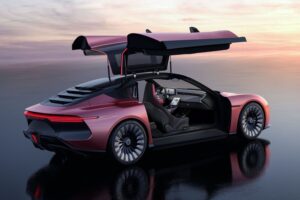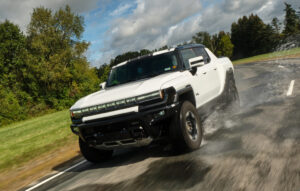Table of Contents
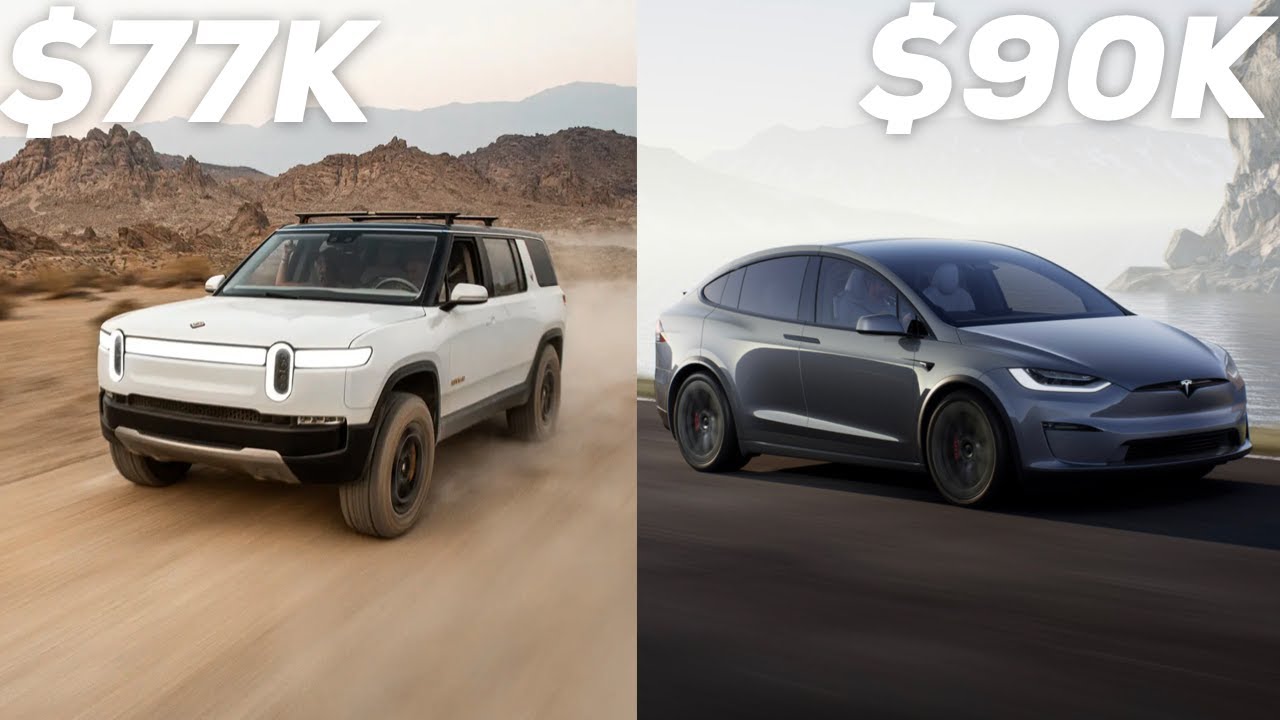
When it comes to electric vehicles, two names stand out: Tesla and Rivian. These two companies are leading the charge in EV innovation, but they cater to different segments of the market. Let’s dive into how these two trailblazers stack up against each other.
Key Takeaways
-
Tesla has a broader range of EVs, while Rivian is focused on adventure vehicles.
-
Performance-wise, Tesla offers longer range models, but Rivian brings robust off-road capabilities.
-
Both brands feature advanced driver-assistance systems, yet they approach technology differently.
-
Rivian’s vehicles are generally pricier, but they offer unique features that justify the cost.
-
Considering an EV? Weighing your options between Tesla and Rivian is crucial, and we’re here to help with that decision. Contact us for more personalized advice.
Defining the Contenders: Tesla and Rivian
Let’s start with Tesla. It’s a household name, known for its sleek, high-performance electric cars and its charismatic CEO, Elon Musk. Tesla has been around since 2003 and has a comprehensive lineup of vehicles, including the Model S, Model 3, Model X, and Model Y.
Rivian, on the other hand, is a newer player, hitting the scene in 2009. They’ve carved out a niche for themselves by focusing on rugged, all-electric trucks and SUVs designed for outdoor adventure. Their flagship models include the R1T pickup and the R1S SUV.
It’s All About the Specs: Performance Metrics Head-to-Head
When you’re comparing electric vehicles, the specs are crucial. How far can they go on a single charge? How fast can they accelerate? Tesla’s vehicles are known for their impressive range and acceleration. For example, the Tesla Model S Long Range boasts a whopping 405 miles of range and can go from 0 to 60 mph in just 3.1 seconds.
Rivian’s R1T isn’t far behind, though, with a 314-mile range and a 0 to 60 mph time of 3 seconds flat. It’s clear that both brands bring their A-game when it comes to performance.
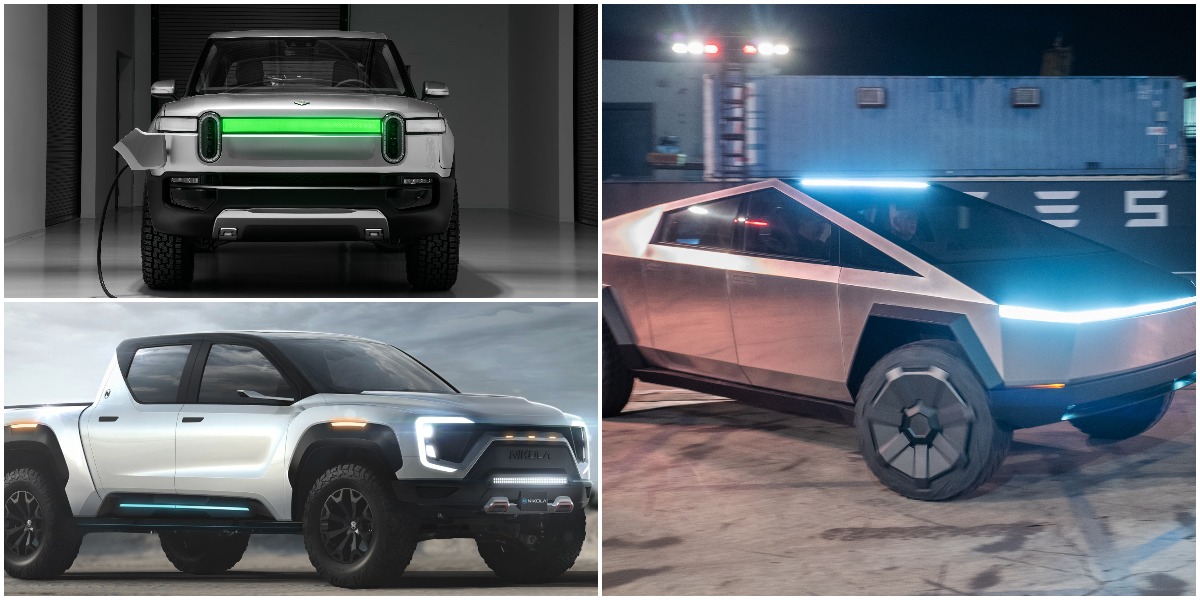
Comparing Technological Innovations: Who Leads the Charge?
Tesla is synonymous with innovation, especially with its Autopilot system, which offers advanced driver-assistance features. Rivian’s answer to this is Driver+, a hands-free driving system that’s designed for highway use.
Both systems are constantly evolving, with over-the-air updates that add new features and improvements. It’s a tight race, but Tesla’s longer presence in the market gives it an edge in terms of refinement and widespread usage.
Driving Experience: Comfort Meets Convenience
Driving an EV should be a pleasure, not a chore. Tesla’s cabins are minimalist and modern, with a focus on the large central touchscreen that controls most of the car’s functions. Rivian’s approach is more traditional, with physical buttons and a dashboard that blends high-tech with rugged luxury.
But it’s not just about looks. Tesla’s vehicles are known for their smooth ride and sharp handling, while Rivian’s are built to tackle rough terrain without sacrificing comfort. Therefore, the choice between the two often comes down to your driving style and where you plan to take your EV.
Feature Warfare: Benchmarking the EV Leaders
When you’re in the market for an EV, features can make or break your decision. Tesla has long been the king of the EV hill, boasting a suite of high-tech features, including a sophisticated infotainment system, over-the-air updates, and a minimalist yet luxurious interior. Rivian, although newer to the scene, is no slouch in the feature department, either. Their vehicles come equipped with a rugged yet refined interior, off-road capabilities, and innovative storage solutions.
Example: A Tesla Model X owner might rave about the convenience of Summon, which allows the car to park itself, while a Rivian R1T owner could highlight the vehicle’s Gear Tunnel, a unique storage compartment that’s perfect for stashing outdoor gear or even using as a makeshift seat.
Tesla’s feature set is geared towards a tech-savvy, performance-oriented driver, while Rivian focuses on the adventurous spirit, offering features that enhance the experience of the great outdoors. Most importantly, both brands are pushing the envelope, driving the EV market forward with each new innovation.
Autopilot vs Driver+ : The Battle of Assisted Driving
Tesla’s Autopilot and Rivian’s Driver+ are both advanced driver-assistance systems, but they approach the task of assisting drivers differently. Autopilot is well-known for its semi-autonomous capabilities, including adaptive cruise control, lane-keeping assist, and the ability to navigate on autopilot under certain conditions. Driver+, while newer, promises similar functionalities with a focus on hands-free driving on the highway.
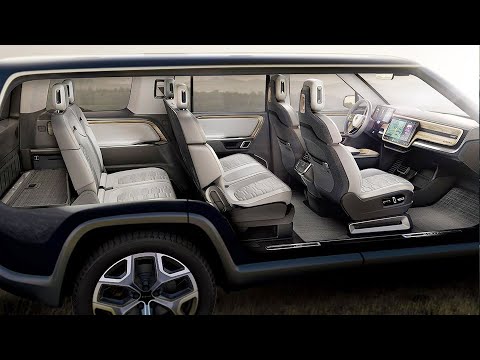
Interior Luxury: A Glimpse Inside the Cabin
The interior of an EV is more than just a place to sit—it’s where technology, comfort, and design meet. Tesla’s interiors are famous for their futuristic feel, with large touchscreens and minimal buttons. Rivian’s interior, while also modern, opts for a blend of high-tech and premium materials that give it a more traditional luxury feel.
Both vehicles offer comfortable seating, but Tesla on techFeature Warfare is evident: Benchmarking the in its EV Leaders Model S
‘YNow,oke’ let’s focus on the specific steering wheel, which features that has been set Tesla and Riv a topician apart of debate. It for its’s not radical departure just about from traditional designs. getting from A to B; Rivian it’s about how, on you get the other hand, there, and what you can incorporates sustainable do along materials like vegan leather the way and reclaimed.
Tes eco-consciousla’s consumers. customer feedback. Their cars come with everything
Here’s from advanced safety features a quick look at what sets these two apart:
-
Tesla’s minimalist, high-tech cabin with a central touchscreen offers entertainment options like Netflix and
-
Rivian’s approach is newer to the game with a blend of rugged luxury and traditional controls, and isn’t holding back either. They equip their vehicles with features that cater to the adventurous, such as a portable kitchen for the R1T truck, and a focus on rugged utility. Choosing between the two may come down to personal preference—do you prefer the cutting-edge simplicity of Tesla or the sustainable, adventure-ready feel of Rivian?
Sustainability: Eco-F. Both manufacturers are>>Both
-
Tesla’s Autopilot offers semi-autonomous driving with features like auto lane change and smart summon.
-
Rivian’s Driver+ focuses on hands-free highway driving with a promise to expand capabilities over time.
-
Feature updates for both brands are delivered through over-the-air software updates, keeping vehicles current and improving over time.

Autopilot vs Driver+ : The Battle of Assisted Driving
Autopilot has become almost synonymous with Tesla. It’s a comprehensive suite of driver-assistance features that’s constantly being refined. Tesla’s commitment to self-driving technology is evident in their regular software updates, which continuously enhance Autopilot’s capabilities.
Driver+, Rivian’s take on driver assistance, aims to offer a similar level of comfort Tesla and Rivian have made commitments to sustainability, not just in their electric powertrains but in their overall business practices. Tesla has a well-established reputation for its contribution to the growth of solar energy through its Solar Roof and solar panels, while Rivian has pledged to achieve net-zero carbon emissions by 2040 as part of the Climate Pledge.
But sustainability isn’t just about emissions—it’s about the entire lifecycle of the vehicle:
-
Tesla uses a high percentage of recycled materials in its vehicles and has a battery recycling program in place.
-
Rivian focuses on responsible sourcing and has plans for a closed-loop recycling system for its batteries.
Both companies are striving to make not just their vehicles, but their entire operations, as green as possible.
Software Updates and Connectivity: The Invisible Features
One of the most significant advantages of modern EVs is their ability to improve over time through software updates. Tesla has been a pioneer in this area, regularly rolling out updates that enhance performance, add new features, and even increase range. Rivian is following suit, with plans for over-the-air updates to keep its vehicles up to date and cutting-edge.
|
Aspect |
Tesla Cybertruck |
Rivian R1T |
|---|---|---|
|
Design |
Unique, futuristic design with tough aluminum panels |
Stylish with a conventional pickup truck appearance |
|
Interior |
Simple with a large infotainment screen |
Simple with infotainment screen and digital display |
|
Battery Options |
Range-topping Cybertruck with 320 miles |
Dual-motor Rivian with up to 410 miles |
|
Charging Speed |
Peak rate of 250 kW, future 350 kW for Cybertruck |
Charging rate varies, up to 155 kW for Rivian |
|
Driving Experience |
Polarizing design, challenging to use sides |
Great driving experience, comfortable daily driving |
|
Towing Capacity |
11,000 pounds for Cybertruck and Rivian |
Comparable towing capacity among the trucks |
|
Bed Length |
72.8 inches for Cybertruck, 54 inches for Rivian |
Rivian has the smallest rear seat space |
|
Additional Features |
Cybertruck has a long bed but hard to use sides |
Rivian offers a gear tunnel for secure storage |
This table provides a comparison between the Tesla Cybertruck and the Rivian R1T across various aspects such as design, interior, battery options, charging speed, driving experience, towing capacity, bed length, and additional features
Cost of Ownership: Tesla vs Rivian
While the sticker price is important, the true cost of owning an EV includes several other factors. Tesla’s vehicles range from the relatively affordable Model 3 to the more expensive Model S and Model X. Rivian’s R1T and R1S come with a higher entry price, reflecting their premium positioning and adventure-ready capabilities.
But there’s more to consider than just the purchase price: understanding the hidden costs and issues of electric vehicle ownership is crucial.
Pricing Strategies: Affordability and Value
Tesla’s pricing strategy has seen a mix of price cuts and increases over the years, but the brand has managed to offer a range of options to suit different budgets. Rivian, still in its early stages, has focused on a premium pricing strategy, positioning its products as luxury adventure vehicles with a starting price to match.
Insurance and Maintenance: Long-Term Considerations
Insurance costs for EVs can vary widely, with Tesla historically being on the higher end due to the cost of parts and repairs. Rivian’s insurance costs are yet to be fully understood, but its focus on off-road capabilities could lead to higher premiums. Maintenance for both brands is generally lower than for internal combustion engine vehicles, but it’s still a factor to consider in the overall cost of ownership.
Don’t forget to factor in the cost of charging, which can vary based on your location and how often you need to charge on the go versus at home.

Looking Toward the Future: Innovation and Expansion
The EV market is rapidly evolving, and both Tesla and Rivian are poised to play significant roles in shaping its future.
Upcoming Models and Features: What’s Next for Tesla and Rivian?
Tesla continues to push the boundaries with announcements of the Cybertruck and the Roadster, which promise to redefine their respective segments. Rivian is expanding its lineup with the R1S SUV, catering to families and adventurers alike.
Infrastructure and Expansion: Building the EV Ecosystem
Infrastructure is key to the widespread adoption of EVs, and Tesla has a head start with its extensive Supercharger network. Rivian is also investing in infrastructure with its Adventure Network of chargers, focused on locations near parks and off-road trails.
As the EV landscape continues to grow, so does the need for more charging options, and both companies are working to meet this demand.
and safety on the road. While it’s still in the early stages compared to Autopilot, Rivian has the advantage of learning from Tesla’s journey, potentially accelerating their system’s sophistication.
Interior Luxury: A Glimpse Inside the Cabin
Step inside a Tesla, and you’re greeted by a sleek, minimalist interior dominated by a large touchscreen. The aesthetic is clean and modern, with features and controls integrated into the digital interface. It’s a design that has come to define the EV interior landscape.
Rivian’s interior, while also modern, opts for a blend of technology with materials that feel more natural and robust—suitable for vehicles designed to tackle the outdoors. Both interiors reflect the brands’ philosophies: Tesla’s future-forward tech hub and Rivian’s durable, adventure-ready command center.
For instance, imagine you’re setting up camp after a long day’s drive. In a Rivian, you could pull out the integrated kitchen from the Gear Tunnel, cook a meal under the stars, and not worry about running out of power thanks to the vehicle’s large battery reserve. It’s this kind of thoughtful feature that distinguishes Rivian in the EV space.
Ultimately, choosing between Tesla and Rivian’s interiors comes down to personal preference and lifestyle needs. Do you value cutting-edge tech and a futuristic vibe, or do you need a vehicle that supports your adventurous endeavors with practical features?

Sustainability: Eco-Friendly Credentials Compared
Both Tesla and Rivian have put sustainability at the forefront of their missions. Tesla’s been a pioneer in this space, not only with their vehicles but also through their solar products and energy storage solutions. Rivian is not far behind, with a focus on using recycled materials and a zero-emissions goal for their supply chain.
Software Updates and Connectivity: The Invisible Features
One of the most revolutionary aspects of Tesla’s and Rivian’s vehicles is their ability to improve over time. Through over-the-air software updates, both companies can roll out new features, enhance existing functionalities, and even improve vehicle performance remotely.
With Tesla’s track record of substantial software updates, owners often wake up to a car that can do more than it could the day before. Rivian is following suit, promising a similar update capability for their vehicles. This means your EV will get better as you own it, an exciting prospect for any tech enthusiast.
Electric Vehicle Culture: Community and Lifestyle
Finally, owning an EV is about more than just driving; it’s about being part of a movement. Tesla has built a strong community around its brand, with a loyal following and a vibrant owner culture. Rivian is quickly developing its own community, with a focus on adventure and exploration.
Whether you’re drawn to Tesla’s high-tech allure or Rivian’s rugged charm, both brands offer a compelling vision for the future of transportation. And as we move towards a more sustainable world, it’s clear that electric vehicles will play a pivotal role. If you’re considering joining the EV revolution, remember that the best choice is the one that fits your lifestyle and values. And if you need help deciding, contact us for expert advice tailored to your needs.
Upcoming Models and Features: What’s Next for Tesla and Rivian?
Looking ahead, Tesla is gearing up to launch the Cybertruck, a vehicle that’s set to revolutionize the pickup truck segment with its futuristic design and robust features. Rivian isn’t resting on its laurels either, with the R1S SUV expected to offer a blend of luxury, space, and off-road capability. Both companies are continuously innovating, ensuring that the future of EVs is as exciting as it is environmentally conscious.
Infrastructure and Expansion: Building the EV Ecosystem
Infrastructure is crucial for the EV market. Tesla’s vast Supercharger network is a testament to their foresight in supporting long-distance EV travel. Rivian plans to introduce the Adventure Network, aiming to support EV charging in more remote locations, perfect for the adventurous spirit of their vehicles. These developments show that Tesla and Rivian are not just selling cars; they’re building an ecosystem for the future of mobility.
Being part of the EV community is about embracing a lifestyle that prioritizes innovation, sustainability, and a sense of belonging. Tesla owners often share a passion for cutting-edge technology and are part of a culture that’s as much about making a statement as it is about driving. Rivian owners are likely to share a love for the outdoors and adventure, valuing the capability and versatility of their vehicles. Both brands foster a strong sense of community among their owners, contributing to the growing culture of electric mobility.

How Does Rivian Compare to Tesla?
In the final analysis, comparing Rivian to Tesla is like comparing two visions of the future. Tesla’s approach is high-tech, sleek, and performance-driven, while Rivian is crafting a narrative that speaks to rugged individualism and a thirst for adventure. Both are shaping the future of transportation, and both have their unique appeal.
Unique Selling Points: Distinguishing Rivian from the Pack
Rivian sets itself apart with its focus on utility and adventure. Features like the R1T’s Gear Tunnel and the vehicle’s off-road capabilities are clear differentiators. Tesla’s unique selling points remain its extensive Supercharger network, cutting-edge technology, and the allure of being part of a brand that’s synonymous with the EV revolution.
Consider the Rivian R1T’s Gear Tunnel – a storage compartment that runs the width of the vehicle, accessible from the outside, which can be used for everything from storing muddy boots to charging power tools. It’s this kind of innovative thinking that positions Rivian as more than just a car manufacturer, but as a lifestyle brand.
Tesla’s Dominance: How Rivian Stacks Up
While Tesla has established dominance in the EV market with its wide range of vehicles and advanced technology, Rivian is quickly gaining ground. Rivian’s focus on a niche market of adventure EVs allows it to carve out its own space, and its commitment to sustainability and innovation makes it a worthy competitor in the rapidly growing EV landscape.
Frequently Asked Questions (FAQ)
As the EV market heats up, prospective buyers have questions. Here are some answers to the most common queries about Tesla and Rivian.
Is Rivian’s technology on par with Tesla’s autopilot?
Rivian’s Driver+ system is designed to offer hands-free driving assistance on highways and is expected to evolve with over-the-air updates. While Tesla’s Autopilot has a more established track record, Rivian is quickly catching up in terms of capability and safety features.
Can Rivian vehicles achieve the same range as Tesla’s EVs?
While Tesla currently offers vehicles with longer ranges, Rivian’s vehicles are competitive, especially considering their off-road capabilities. For example, the Rivian R1T has a range of over 300 miles, which is more than enough for most adventures.
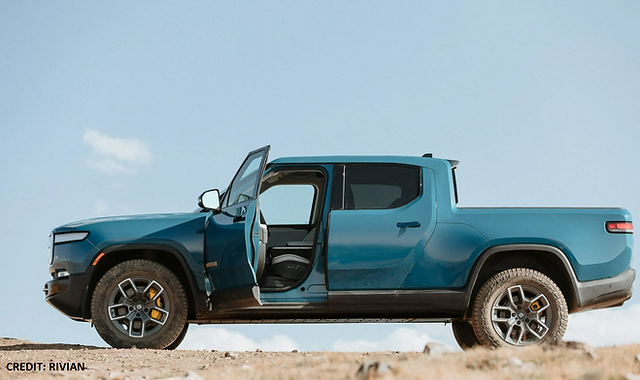
How do the prices of Rivian vehicles compare to Tesla’s lineup?
Rivian’s vehicles are generally priced higher than Tesla’s, reflecting their premium features and off-road capabilities. However, the price difference can be justified by the unique value Rivian offers to its target market of adventure seekers.
What are the off-road capabilities of Rivian compared to Tesla’s models?
Rivian’s vehicles are designed with off-roading in mind, offering features like adjustable air suspension, all-terrain tires, and a wading depth suitable for fording rivers. Tesla’s vehicles, while also capable in various conditions, are more focused on on-road performance and efficiency.
How does the interior luxury of Rivian vehicles match up against Tesla?
Rivian’s interior design emphasizes rugged luxury with materials suited for the wear and tear of outdoor activities, while Tesla opts for a minimalist and sleek interior that’s heavy on tech. Both offer a comfortable and luxurious driving experience, but with different priorities reflected in their design choices.
In summary, whether you lean towards the sleek, tech-forward approach of Tesla or the rugged, adventure-ready spirit of Rivian, both brands offer compelling reasons to join the EV movement. If you’re ready to take the next step towards an electrified future or have more questions about which EV is right for you, don’t hesitate to contact us. Our team is ready to help you navigate the exciting world of electric vehicles.


